Soft power of international cultural metropolis
10 June 2018
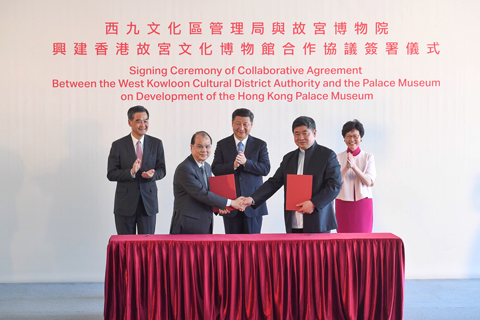 |
The Groundbreaking Ceremony for the Hong Kong Palace Museum, which took place a couple of days ago (on 28 May), marked the commencement of the construction of the museum scheduled to open in 2022.
This project carries great significance for me. As the then Chairman of the Board of the West Kowloon Cultural District Authority, I signed the Collaborative Agreement on Development of the Hong Kong Palace Museum with Dr Shan Jixiang, Director of the Palace Museum in Beijing, in the presence of President Xi Jinping last June. The recent groundbreaking ceremony has further set a milestone for Hong Kong’s cultural development.
The Chinese culture, originating thousands of years ago, is extremely rich and diverse. Beijing’s Palace Museum, among the most prestigious of its kind in the world, is a treasure trove of artefacts representative of the Chinese culture as well as of the human civilisation. Of its 1.8 million-strong collection, only about 10 000 items (0.6%) are exhibited each year.
With the country’s support and blessings, Hong Kong is given the privilege to exhibit on a long-term basis the collection of Beijing’s Palace Museum in the Hong Kong Palace Museum. No less than 600 pieces/sets of artefacts will be on display in permanent exhibitions. Ad hoc exhibitions will also be organised. Local residents and visitors from around the world can take their time enjoying the exquisite selections, appreciating the palatial wonders, and exploring the essence of the Chinese culture in a comprehensive and in-depth manner.
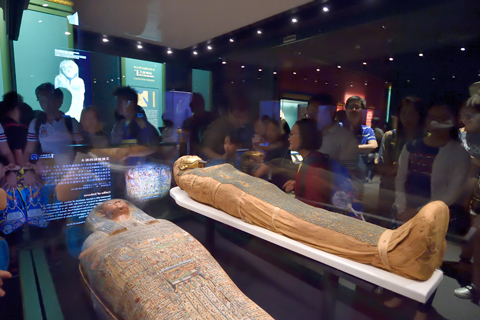
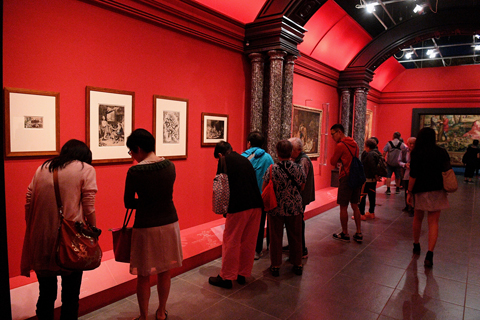
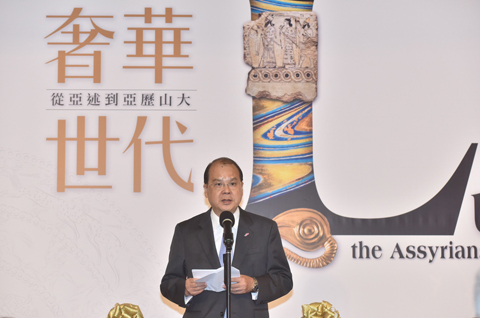
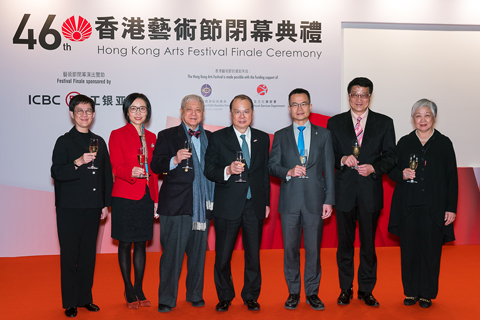 |
As Asia’s world city where East meets West, Hong Kong aspires to forge closer partnerships with world-class cultural institutions. We staged a series of mega exhibitions in June last year to celebrate the 20th anniversary of the Hong Kong Special Administrative Region, including the “Eternal Life – Exploring Ancient Egypt” at the Hong Kong Science Museum. Showcasing a good number of mummies and artefacts on loan from the British Museum, the event offered a glimpse into ancient Egypt mysteries and attracted an impressive attendance of 850 000 visitors.
Another major event to celebrate the 20th anniversary was the exhibition entitled “Inventing le Louvre: From Palace to Museum over 800 Years” held in April last year, at which we brought to local audience an array of premier exhibits from the world-renowned Louvre Museum, France.
And the latest endeavour was the thematic exhibition of “An Age of Luxury: the Assyrians to Alexander” jointly launched by the Hong Kong Museum of History and the British Museum last month. About 210 precious objects travelled from the latter to Hong Kong, the first stop of its world tour, to showcase the luxurious and extravagant lifestyle of ancient civilisations in the Middle East.
We in Hong Kong are truly blessed for being able to appreciate the best of the best in arts and culture from across the globe on our home soil.
And the wonders keep coming. Our diverse cultural events include Chinese, western and jazz concerts, film and arts festivals, international performances, local superstar shows and many more, epitomising Hong Kong’s cultural vitality. During the 2018 Hong Kong Arts Festival, 130 performances were staged by more than 1 700 outstanding artists from home and abroad.
Moreover, free admission to the permanent exhibitions of five designated museums of the Leisure and Cultural Services Department, namely the Hong Kong Museum of History, the Hong Kong Heritage Museum, the Hong Kong Museum of Coastal Defence, the Dr Sun Yat-sen Museum, and the Hong Kong Museum of Art (to re-open in 2019) is available from August 2016 onwards. Full-time students can also have free access to the permanent exhibitions of the Hong Kong Science Museum and the Hong Kong Space Museum. In the first year after the implementation of the new initiative, apart from the Hong Kong Museum of Art and the Hong Kong Space Museum (which had their exhibition halls closed for renovation), the remaining five museums recorded an attendance of nearly 4.57 million (from August 2016 to July 2017), representing a substantial increase of over 70% (or 1.91 million) when compared with the same period a year earlier (from August 2015 to July 2016: 2.66 million).
Besides, 2018 is an important year for the Guangdong-Hong Kong-Macao Bay Area development. With the upcoming commissioning of the Hong Kong-Zhuhai-Macao Bridge and the Guangzhou-Shenzhen-Hong Kong Express Rail Link, the Bay Area will become a new arena for our performing arts sector.
Hong Kong has a diverse and international pool of outstanding performing arts groups combining the best from the East and the West. Yet we are challenged by the growing demand for performing venues. The plentiful supply of performing venues and a huge audience in Bay Area cities are ready to provide complementary benefits that will be favourable to all cities in the area.
A forum on Mainland-Hong Kong-Macao co-operation for cultural industries and cultural co-operation in the Bay Area was held last month (on 11 May). The Secretary for Home Affairs attended the event together with over 100 representatives from Hong Kong’s cultural sector. Enhanced cultural exchange among the three places and identification of new opportunities were discussed. The event also provided a platform for performance venue operators on the Mainland and arts groups from Hong Kong to explore future collaboration opportunities.
The Government of the Special Administrative Region will make continued efforts to foster cultural exchange with other cities in the Bay Area. In particular, we will take the lead to build an exchange platform for promoting Hong Kong’s cultural and arts programmes in the area, and support local arts groups to perform and go on exchange to various parts of the area.
I have great expectations for the arts and cultural development of Hong Kong. Deeply rooted in Chinese tradition, Hong Kong’s culture is characterised by its diversity, openness, inclusiveness, flexibility and innovation. We have long been a bridge for cultural exchange between China and the rest of the world and a promoter of the Chinese culture across the globe. By showcasing the wonderful fusion of tradition and modernity as well as the soft powers of the mixed culture of East and West, we are set to become an international cultural metropolis.

